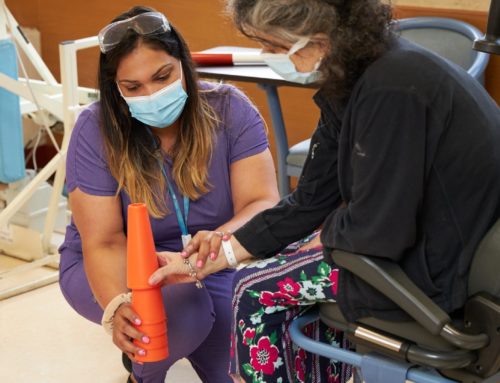How Effective is Hand Therapy for Pain Management?
You use your hands more each day than the rest of your body parts combined. Unfortunately, their repeated use also makes them prone to damage, including nerve injuries, fractures, arthritis, and carpal tunnel. For some conditions, repairing the issue requires surgery, often including weeks or months of rehab to prevent chronic conditions. Though occupational and physical therapies offer quality treatments, hand therapy is essential for reducing pain and improving recovery.
Hand therapy and rehabilitation is post-injury or surgery therapy using specialized techniques focused on the complexities of the human hand. A rehab therapist guides you through exercises designed to rebuild strength and increase range of motion. Pain control is also a vital part of therapy to help you regain full use of your hands. Let’s take a closer look at the benefits rehab has to offer.

What is Hand Therapy?
The hand is a complex mixture of bones, muscles, tendons, joints, nerves, and blood vessels. These pieces work simultaneously to perform simple to intricate tasks. Such multipurpose use causes constant wear and tear and the manipulation of harmful objects. When the hands are injured or damaged, specialized care may be necessary to ensure a full recovery.
Hand therapy is a rehabilitation therapy, including physical and occupational therapy, focused on the delicate and intricate nature of these complicated body parts. A certified physical or occupational therapist assesses your limitations, including grip strength and range of motion. Then they will create a customized treatment plan to improve your recovery or manage a long-term condition.
The treatment for hand injuries or conditions varies, depending on patient’ needs. It often involves exercises, which the therapist will guide you through to ensure proper movement. Rehab may include heat or ice therapy, splints, electrotherapy, or massage.
The main goal of hand rehabilitation is to regain your previous abilities whenever possible. As well as improved strength and range of motion, hand therapy offers a few other benefits. It may eliminate the need for surgery or prevent complications afterward, such as infection, scar tissue, and swelling. It may also offer long-term solutions for chronic issues, like wearing splints to reduce stiffness or inflammation.
Several hand conditions may benefit from hand therapy, including arthritis, carpal tunnel syndrome, trigger finger or thumb, and Dupuytren’s disease. Those who have undergone surgery for joint replacement, tendon repair, or amputation may also require rehab.
Is it effective for pain management?
When your hands are stiff, sore, or injured, it’s difficult to perform even the simplest tasks. That’s why a crucial aspect of hand therapy is pain management. Several pain reduction methods are used during treatment.
Your therapist may use splints to manage inflammation causing your discomfort. Heat therapy reduces stiffness, while cold therapy decreases hand pain. Even the exercises and stretches your physical therapist assigns help your hands feel better.
The expectation of pain is also something to take into account. The belief that treatments may cause pain before relieving it decreases motivation, so it’s important to overcome such concerns. Your hand therapist may recommend counseling to manage mental health issues hindering you from meeting your hand therapy goals.
This article contains informational and educational materials and does not replace health or medical advice. For questions or concerns regarding your medical condition or health objectives, speak to a qualified physician or healthcare provider.






Leave A Comment